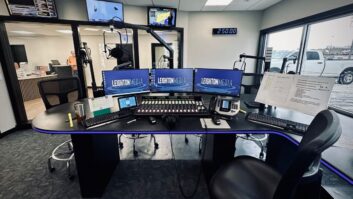In July, the Media Bureau proposed rules governing low-power television stations to transition to digital.
NPR filed a petition for reconsideration asking the FCC to clarify that LPTVs must protect non-com FMs from interference from adjacent LPTV Channel 6 stations and include that obligation in its rules governing the LPTV service. The broadcaster also asked the commission to specify that LPTVs using TV Channel 6 to provide an FM radio service “in lieu of a bona fide television service” are operating without commission authority. That’s a reference to so-called “Franken FMs,” that operate an analog aural carrier on 87.7 MHz.
We’ve reported that NPR says those LPTVs are causing interference to member stations, while the LPTVs say they’re operating within the law. NPR believes it’s important to clarify the situation, especially if the FCC authorizes Channel 6 LPTVs to operate with increased power.
The FCC, meanwhile, has not stepped in to illuminate the situation, which will end when LPTVs go digital.
Hammett & Edison said in its petition for reconsideration that NCE FMs are protected from interference from LPTVs on Channel 6 in theory, but the language is not meaningful without a Part 74 rule for LPTV, TV translator, and TV boosters. “That is, Section 74.703(b) of the commission’s rules discusses the obligation of a secondary LPTV/TV Translator/TV Booster station not to cause interference to the reception of existing TV signals, but makes no mention of interference to the reception of FM signals,” states Hammett & Edison. With no benchmarks, how can a digital LPTV licensee know there may be a problem if it obtains a CP and builds a facility, asked H&E rhetorically.
There need to be technical standards for “D06-into-NCEFM stations,” stated H&E, which suggested that if the commission wants to go this route, it should open a rule-making on this issue specifically.
“We do not want to see a nonexistent protection requirement for DTV-into-NCEFM arbitrarily and capriciously established,” stated H&E, adding that it’s past time for the FCC to finish updating its rules to reflect the reality of current digital TV operations.
Comments on petitions for reconsideration were due yesterday to Docket 03-185.
In its filing this week, NPR says the commission doesn’t need to reconsider its LPTV Report & Order based on the H&E petition, stating: “To address concerns raised by NPR about potential interference to NCE FM stations, the commission affirmed the secondary status of LPTV stations and their obligation to protect primary services, including NCE FM radio stations, from interference. While the Hammett & Edison petition agrees that such protection is required, it seeks reconsideration of the Second Report and Order based on a lack of technical criteria for predicting when such interference might occur.” NPR urged the agency to reject the H&E petition.
However the broadcaster is not opposed to the development of further technical standards to predict the occurrence of LPTV-to-NCE FM interference, but believes that’s a matter “separate from an obligation to ameliorate interference that an LPTV station actually causes.”
NPR also opposes efforts to delay the LPTV transition put forth by the NTA, Signal Above and Cohn and Marks and says those petitions should all be dismissed.
Hammett & Edison agrees with NPR that the FCC erred by restricting interference protection rights of a non-commercial FM from a TV Channel 6 LPTV or TV translator only to first-adjacent channel NCE FMs. “A secondary TV Channel 6 LPTV or TV translator station, especially one operating at the now allowed 3 kW effective radiated power, could cause interference to an NCE FM station operating on any of the reserved channels, not just FM Channel 201 (88.1 MHz). NCEFM stations on FM Channel 202 (88.3 MHz) or FM Channel 203 (88.5 MHz) would presumably be less susceptible to adjacent-channel interference from a digital TV Channel 6 station, but not immune to adjacent-channel interference,” states H&E in its comments filed this week. “For FM Channels 204 through 220 (88.7–91.9 MHz), brute force overload interference could be created to NCE FM listeners close to a TV Channel 6 transmitter.”
H&E believes the commission needs to develop technical criteria defining both digital TV Channel 6-into-NCEFM interference, and NCE FM-into-digital TV Channel 6 interference. Such technical rules would also provide commission with a benchmark to use in determining whether a particular application should be granted, according to H&E.
As far as timing for the transition, the FCC in July proposed a Sept. 15, 2015 deadline for low-power television stations to transition to digital. Among other things, the FCC proposed requiring existing analog and digital LPTVs in the 700 MHz band (channels 52-69) to [have] submit[ted] displacement applications by Sept. 1, 2011, and to cease operations in the 700 MHz band by Dec. 31, 2011.
The National Translator Association said the Dec. 31 construction deadline is unworkable and asked that it be extended to June 30, 2013. Other commenters requested delaying the deadlines as well. NPR opposes efforts to delay the LPTV transition put forth by the NTA, Signal Above and Cohn and Marks and says those petitions should all be dismissed.
— Leslie Stimson










